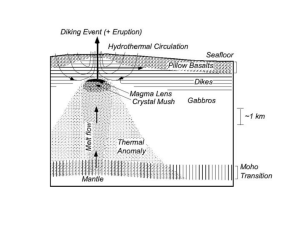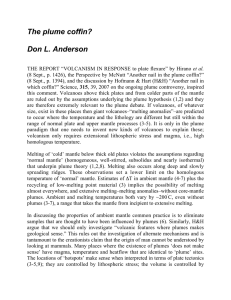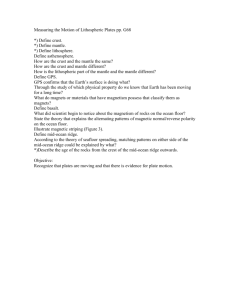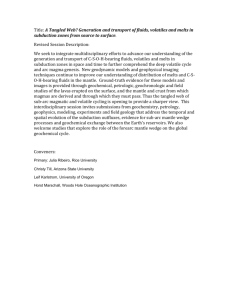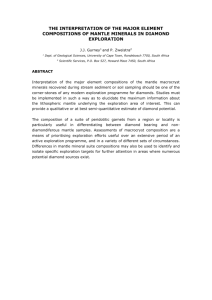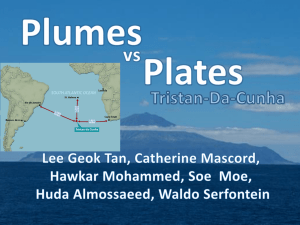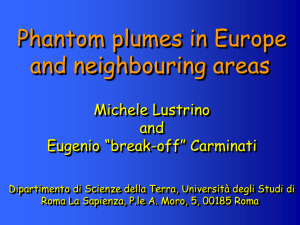Geochemical variations at a ridge
advertisement
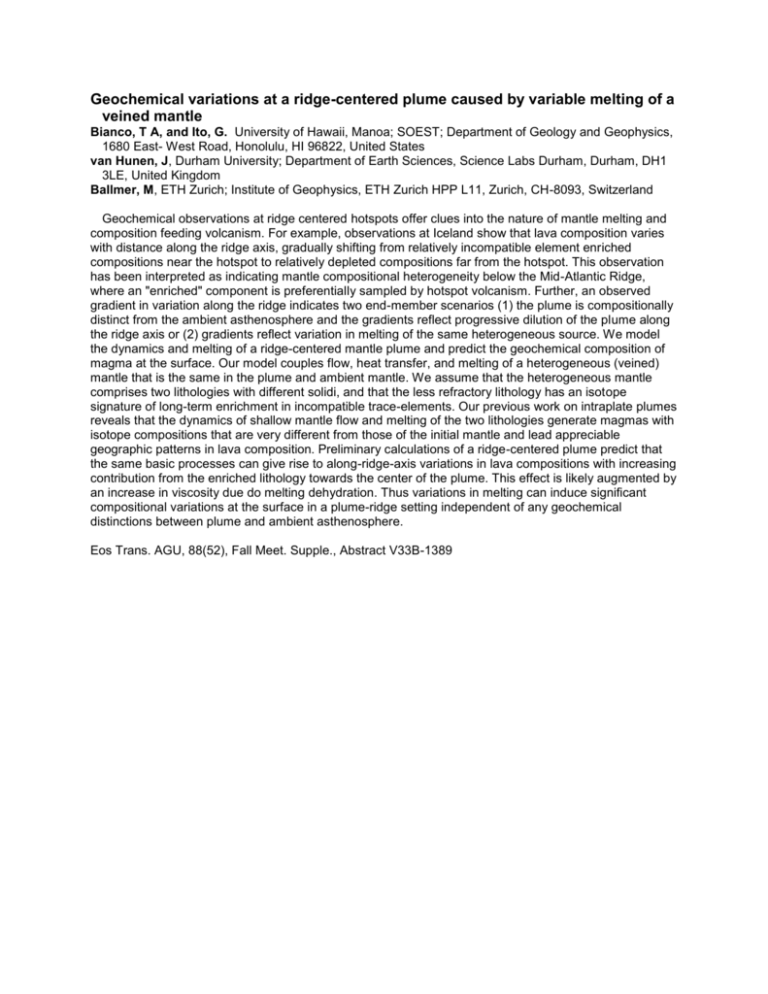
Geochemical variations at a ridge-centered plume caused by variable melting of a veined mantle Bianco, T A, and Ito, G. University of Hawaii, Manoa; SOEST; Department of Geology and Geophysics, 1680 East- West Road, Honolulu, HI 96822, United States van Hunen, J, Durham University; Department of Earth Sciences, Science Labs Durham, Durham, DH1 3LE, United Kingdom Ballmer, M, ETH Zurich; Institute of Geophysics, ETH Zurich HPP L11, Zurich, CH-8093, Switzerland Geochemical observations at ridge centered hotspots offer clues into the nature of mantle melting and composition feeding volcanism. For example, observations at Iceland show that lava composition varies with distance along the ridge axis, gradually shifting from relatively incompatible element enriched compositions near the hotspot to relatively depleted compositions far from the hotspot. This observation has been interpreted as indicating mantle compositional heterogeneity below the Mid-Atlantic Ridge, where an "enriched" component is preferentially sampled by hotspot volcanism. Further, an observed gradient in variation along the ridge indicates two end-member scenarios (1) the plume is compositionally distinct from the ambient asthenosphere and the gradients reflect progressive dilution of the plume along the ridge axis or (2) gradients reflect variation in melting of the same heterogeneous source. We model the dynamics and melting of a ridge-centered mantle plume and predict the geochemical composition of magma at the surface. Our model couples flow, heat transfer, and melting of a heterogeneous (veined) mantle that is the same in the plume and ambient mantle. We assume that the heterogeneous mantle comprises two lithologies with different solidi, and that the less refractory lithology has an isotope signature of long-term enrichment in incompatible trace-elements. Our previous work on intraplate plumes reveals that the dynamics of shallow mantle flow and melting of the two lithologies generate magmas with isotope compositions that are very different from those of the initial mantle and lead appreciable geographic patterns in lava composition. Preliminary calculations of a ridge-centered plume predict that the same basic processes can give rise to along-ridge-axis variations in lava compositions with increasing contribution from the enriched lithology towards the center of the plume. This effect is likely augmented by an increase in viscosity due do melting dehydration. Thus variations in melting can induce significant compositional variations at the surface in a plume-ridge setting independent of any geochemical distinctions between plume and ambient asthenosphere. Eos Trans. AGU, 88(52), Fall Meet. Supple., Abstract V33B-1389
